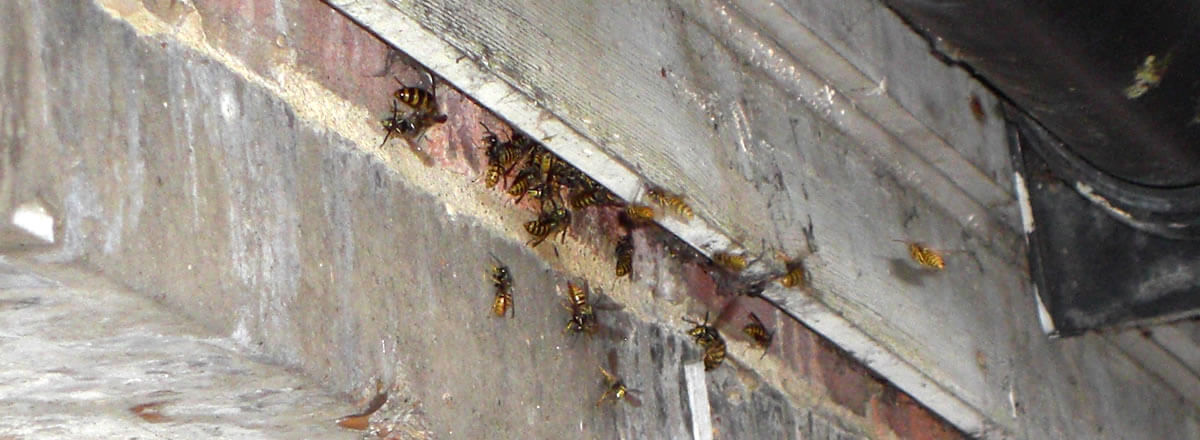Have you spotted a wasps nest?
Call Rentokil Initial today for advice and to schedule a wasp nest inspection of your home or business or contact us now.
Contact Rentokil Initial>>
Pest control service
Integrated Pest Management
Termite solutions
Common pest
Specialist services
Hygiene and scenting
Hygiene services
Scenting services
Space & surface treatment services
Industry & residential
My business handles food
My business doesn't handle food
MY Home services
About Rentokil Initial

Call us for a free quote on 400 820 8770 or contact us
If you are experiencing high numbers of wasps in your home or garden there is likely to be a nest nearby, either on your property, in your garden or very close by.
A mature European Wasp nest in summer can contain thousands of wasps.
It is important to treat a wasp nest early to reduce the threat of a wasp sting, which can be very painful and even cause an allergic reaction.
You should not attempt to treat a wasp nest if you are sensitive to stings. If you disturb a nest, you may provoke the wasps inside to attack and sting you as a form of defence.
At Rentokil Initial, we offer a professional wasp nest treatment service to protect you from harmful stings by eliminating the nest.
Qualified professionals - All our wasp control technicians are fully trained and equipped with all necessary safety gear to complete the treatment quickly and safely.
Safe treatments - Our expert technicians follow strict guidelines to ensure you and your family are safe from harm during treatment.
Nest removal - We can also arrange for the removal of a nest (at a later date; at least 48 hours after treatment to allow for scout wasps to return and be killed) to reduce the risk of a secondary infestation.
Wasps make their nests from chewed wood pulp and saliva, giving them distinctive papery walls.
Nests are usually built in sheltered spots with easy access to the outside. You can often find wasp nests in wall cavities, roof spaces, under eaves, in bird boxes, sheds or garages.
To locate a nest, carefully watch the flight path of the returning wasps, this becomes easier later in the summer as the numbers of wasps increase.
At first, a wasp nest will start off very small.
When a Queen wasp starts to build a nest in spring it is usually about the size of a walnut or golf ball.
As summer progresses the nest will grow rapidly in size, as the number of wasps increase. A nest can become the size of a football, or even bigger in some cases.
It is best to treat a nest earlier in the year before numbers increase and the wasps become more aggressive.
It is possible to confuse wasps with bees. However the treatment available for a wasp nest and a bee hive differ.
Bees are an endangered species and a bees nest will only be removed if it poses a significant threat to nearby people. Rentokil Initial will only treat a bees nest as a last resort and with honey bees, only after contacting a qualified bee keeper.
Treatments for a wasp nest are far more common and can be carried out professionally by Rentokil Initial, quickly and safely.
The English Wasp (Vespula vulgaris) and the European or German wasp (Vespula germanica) have become established in [country], [country], and [country] and over time will become widespread throughout [country].
The Papernest Wasp nests are generally smaller and are the wasp nests you are most likely to see on external surfaces of your home or business.
Other wasp species are also considered pests but are far less common.
Wasps have much less hair on their bodies than bees.
Wasps have a tighter waist between the thorax and abdomen than bees.
Wasps are sometimes mistaken for hornets as they are similar in appearance, but wasps are smaller in size.
Wasps have distinctive yellow and black markings on their bodies.
They have three main body parts; the head, thorax and the abdomen.
Worker wasps vary in size from 12-17mm.
Only female wasps sting and can do so repeatedly.